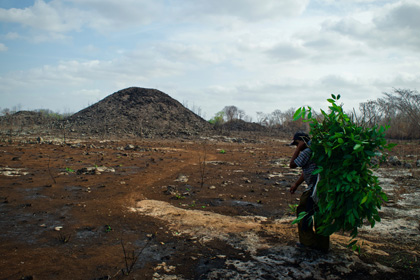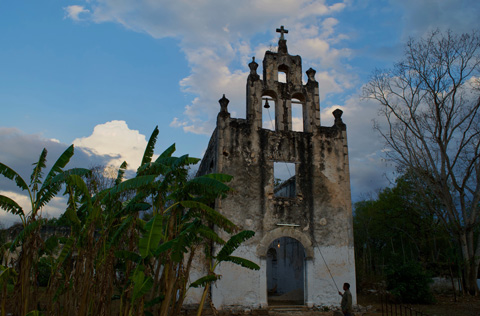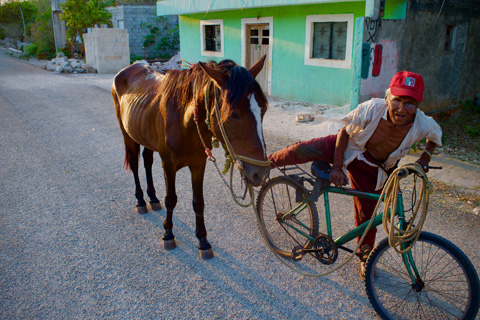In the Maya village of Yaxunah, farmers prepare unexcavated pyramids for planting, banana trees envelop the shell of a Catholic church, and nature does not exist in the local language. Rather, the lexicon allows the forest to penetrate the village, fields to fill forests, and stories to rustle from trees. Campesinosfoster biodiversity with a system of shifting agriculture, employing hundreds of words for soil and corn to enrich land that would otherwise bake in the tropical sun.
During fieldwork, I became intrigued by the ways the Maya language was entangled with environmental knowledge. As in much of the world, human-environmental relationships are shifting rapidly. Some Yaxunah children speak Mayan in mornings and evenings, or when they visit the shaman for a cure, but most days are spent speaking Spanish in a cinderblock school. Meanwhile, state development programs encourage population concentration, pushing ecological limits while limiting accessible land. In the village, the flap of feathers and hum of honeybees are accompanied by electronic music booming from thatched-roof huts. Reconciling the cycles of agricultural life and language with the rhythms, pressures, and values of modernity will indelibly shape the people and the environment of the Yucatán in the years to come.
Artefacts
A farmer walks past unexcavated pyramids carrying a bushel of ramón from the forest. While the pyramids stand as artefacts of a society long faded, the surrounding forest is a living, breathing artefact of Maya society. For five thousand years, the forest has been enriched by Maya cultivation, with inhabited areas now exhibiting higher biodiversity than nearby “natural” reserves. For Maya campesinos,walking through the forest is a story of cultivation history, spiritual significance, culinary delights, and pharmacological potential, narrated through the significance of each plant, tree, and animal.
Open Worship
A man rings a bell to call villagers to worship in the shell of a Catholic church. Open to the sky, this church was burned during  the Yucatec Caste War in the early 20thcentury. The church is also open to other elements of Maya spirituality, such as rain ceremonies and witchcraft deterrents.
the Yucatec Caste War in the early 20thcentury. The church is also open to other elements of Maya spirituality, such as rain ceremonies and witchcraft deterrents.
Two Hard Workers
As the population of Yaxunah has grown, many farmers have been forced to travel greater distances to access fields. The man  in this photo bicycles through the forest to mitigate the distance, bringing his equestrian friend for help carrying loads of wood and produce.
in this photo bicycles through the forest to mitigate the distance, bringing his equestrian friend for help carrying loads of wood and produce.
